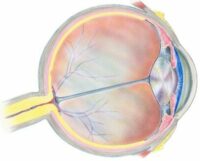What is open angle glaucoma?
Posted in Bellingham, Dilating Eye Drops, Eye Blog, Eye Exam, Fluctuating Vision, Medical, Mount Vernon, Surgery, Whidbey
By Ernesto Golez MD
What is open angle glaucoma and why is it knowing about it important to your eye health? We asked Ernesto Golez III our glaucoma specialist, to explain:

What is “open angle” glaucoma?
“Glaucoma is a group of diseases that cause damage to your optic nerves. This leads to progressive vision loss ending in permanent blindness. The two main types of glaucoma are “open angle” and “angle closure.” In open angle glaucoma, the angle between the iris (the colored part of the eye) and cornea (the clear protective outer layer of the eye) is wide and open. This kind of glaucoma usually develops slowly and is the most common type. In angle closure glaucoma, the angle between the iris and the cornea is narrow or closed. This kind of glaucoma more often requires immediate medical attention.
What causes open angle glaucoma?
Open angle glaucoma is mostly caused by clogging inside the drainage canals between the iris and the cornea. Since the eye is constantly producing fluid inside the eye, this causes a build-up of the fluid, putting pressure on the eye’s optic nerve and causing permanent damage. Most of the time the cause of the clogging is unknown to experts, but it is said to run in families. Typically, you do not get it until later in life.
Who is most at risk?
Aside from high eye pressures and a family history of glaucoma, increased risk for open angle glaucoma is found in African American, Irish, Russian, Japanese, Korean, Hispanic, Inuit, or Scandinavian descent, people aged 60 and older, and people with cardiovascular disorders. Other people with potential risks include people who are very severely nearsighted, diabetics, those who had an eye surgery or injury, have elevated blood pressure and/or those who use corticosteroids such as eye drops, pills, inhalers, and creams. If you think you have a high risk, consult your eye doctor for screening.
Symptoms are generally non-specific:
People may notice pain, headache, nausea, and decreased vision, but most people with open angle glaucoma do not manifest any symptoms. It is therefore important for a patient with open angle glaucoma to have regular checkups with their eye doctor and follow the treatment plan agreed upon.
You can lower your risk by maintaining a healthy lifestyle. Maintain a healthy weight, keep blood sugars and other medical conditions under control and exercise daily. Foods that are good for the eyes include dark green, yellow, and orange fruits and vegetables, fruits, and vegetables abundant in vitamin C, E, A and D, and foods rich in zinc and omega-3 fatty acids.
Remember that early detection and regular medical care are the best ways to prevent and control glaucoma to avoid permanent vision loss in the future.”
Contact Cascadia Eye
If you would like to learn more, or if you would like to schedule an appointment or consultation with our talented doctors at Cascadia Eye, please contact us today. You may also pre-shop for glasses at our online pre-shopping page any time. Our entire team is committed to protecting and improving your vision and the health of your eyes. We are happy to answer any questions you might have!
In addition, join us on Facebook, Instagram or YouTube to ask your questions about eyes, exams, and our practice. We’d love to hear from you – and there might be a blog to address your questions in the future.



